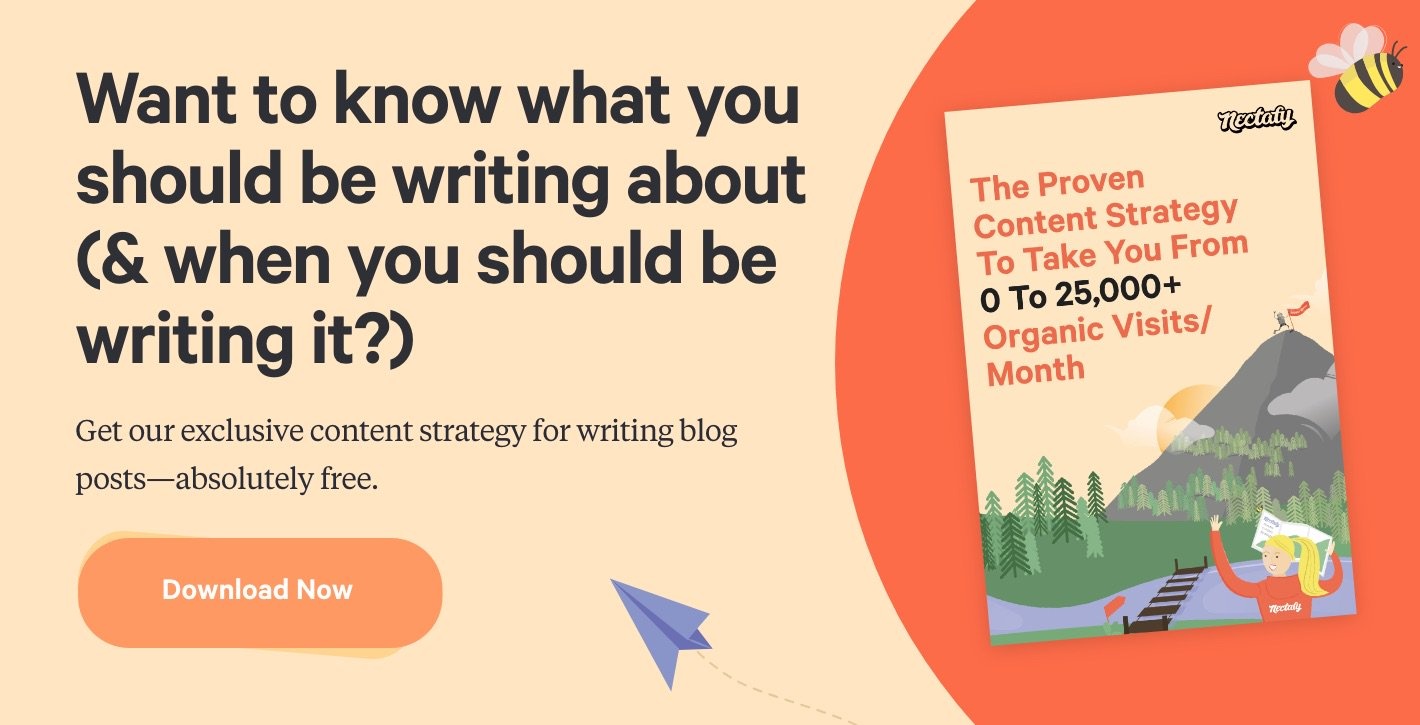Inbound Marketing For Startups In 7 Steps



There once was a startup with a brand new website with a bunch of great ideas and helpful information—but no real leads to speak of and no real plan in place to take those ideas and turn them into something that was accessible for their audience.
Sound familiar?
It did for us, too—like many startup companies, Nectafy began with a brand new website and no leads to speak of. Since we began our HubSpot experiment two years ago, we’ve used inbound marketing exclusively to get to where we are today.
We’ve experienced firsthand how inbound marketing for startups can help a company blossom. Check out these seven steps your startup can take to get started with inbound marketing.
Step #1: Determine your budget.
This is the first and most important decision you will make. Here are some things to keep in mind when you’re considering your budget and playing around with numbers:
- How much of your budget can you dedicate to marketing? Inbound marketing has a great ROI, but whether you do it internally or hire an agency to help, it still costs.
- You’ll likely want a mix of pay-per-click (PPC) and organic traffic. The idea is to pay for visitors and leads before your site has authority. Then, once you’ve established steady traffic through your inbound marketing efforts (generally about a year or two into the process), you can shift to inbound, and you’ll be able to cut back your paid budget.
Step #2: Determine your goals.
Once you’ve calculated what you will be able to spend on inbound marketing, you’ll need to figure out your goals for your startup. Here are a few questions to help you get started:
- What dollar amount do you need to hit in revenue for year one?
- How many leads will it take to make a sale?
- What is the lifetime value of a new customer?
Then, start setting goals that fill up your sales funnel.
For example, you might establish that you need $1 million in revenue, which for your company would be 25 new customers, 250 new marketing qualified leads (MQLs), and 1,250 leads. You can then map out how you should get there within your budget.
One important thing to remember: We’re not suggesting that everyone will see amazing results with inbound marketing. If the results aren’t what you expected, keep doing some investigating to see if inbound marketing is the best tool for you or if other options may serve you better. If you want to know more about your results, let us know.
Step #3: Figure out how to accomplish your goals.
Now that you’ve determined your goals, it’s time to get to work planning out specifically how you’re going to accomplish them. The most important aspect in accomplishing your goals is the team you have in place.
You have four options when assembling your team:
- Teach yourself. You can go the DIY route and learn the ins and outs of inbound marketing yourself, and then spread out the workload.
- Hire a staff member. You can hire someone to manage and/or write the content.
- Partner with an agency. There are a ton of agencies who offer expertise with inbound marketing for startups.
- Hire contract writers. If you’ve got some direction and someone to manage content and you need only writers, this may be an option to consider.
Henry’s broken down the advantages and considerations of each of these options in his article 4 Ways To Kickstart Your B2B Content Marketing. It’s an unbiased resource in determining the cost breakdown in terms of the resources you’ll need to devote to each of these methods in order to get your money’s worth, so check it out before you commit to anything.
If you want to see a case study in time spent implementing inbound marketing, you can check out How Much Time Doing Inbound Marketing Is Actually Spent In HubSpot? This article is a really good look at how much time we spend on our inbound marketing at Nectafy.
Step #4: Craft personas and buyer questions.
No matter who’s going to be working behind the scenes of your inbound marketing efforts, if you want to create the right kind of content (and not just waste time and money creating a bunch of stuff that no one—or worse yet, the wrong people—are reading), you’ll need to establish buyer personas and buyer questions.
Buyer personas are specific people in your target audience who you’ve pinpointed as good potential customers for your product or service. In HubSpot, they are defined as “semi-fictional representations of your ideal customer based on market research and real data about your existing customers.” You can learn more about developing your buyer personas here.
Buyer questions come along right after you’ve developed your buyer personas. They are the questions you determine your buyer personas are asking in each stage of the buying funnel. Your buyer questions should be determined by the questions or issues your personas have about your industry. Consider the following:
- How are they trying to solve their problems?
- What are they trying to figure out?
- What will concern them during every stage of the buyer journey?
By structuring these questions around the buying journey, you’ll be able to answer the concerns of your personas more personally and descriptively. The buyer questions you decide on should include the terms and phrases from your keyword research. You can learn more about asking the right buyer questions here.
The most convenient place to store and keep tabs on all of your inbound marketing efforts, including both the personas and questions you come up with? This workbook.
It doesn’t make sense to have 20, 50, or 100 different documents or spreadsheets for all of your inbound marketing stuff. Chances are, if you have that many, you can’t even find—much less use—the stuff you need.
We needed a central location to store our goals, personas, content and inventory plan, keyword list, competitors, ideas, and lists and forms, so we created this spreadsheet. Just click here to get it for free.
Step #5: Build authority for your site.
If you’re new, your site won’t have any trust from Google. (You can check your MozRank to learn more.) You need to build trust with content and links from reputable sites in order to gain that trust.
There are a couple ways to go about building that authority:
- You should do things that get high-quality links back to your site. That means creating content that brings helpful knowledge, advice, and resources to your audience or peers, which can continue to add value to your website long after you press publish. You can do this by creating content like industry data and statistics, lists of resources, lists of experts, fundraising and press releases, guests posts, comparison posts, and industry reports.
- You should have really, really, really great content. We’re not talking about just what you think is good. (I mean, I love a good meme, but most of them aren’t going to help build Nectafy’s authority… darn it.) Beyond articles, you need infographics, videos, studies, and expert lists that are amazing.
Step #6: Focus on non-competitive keywords.
Our real-life example: You won’t rank for “inbound marketing agency” right away, but you might be able to rank for “HubSpot review” right away. These both attract a similar crowd: marketing people who are looking to do inbound and need some help. A Non-Competitive SEO Strategy For 2015: Comparison Keywords walks you through this vastly unused process that can help you out.
You can also earn some SEO cred by doing things like writing long-form articles, writing about key performance indicators (KPIs) if you’re a B2B, and doing “guestographics.” Here’s why those things historically work well for startups.
Step #7: Build offers that turn your visitors into leads.
So, you’ve done all of this planning, put together an amazing team, created a solid content plan, and followed it up with helpful articles and content… but you’re not getting any traction. Don’t freak out yet.
Instead, make sure you’re giving something for those visitors to do once they’ve finished reading. Provide a clear “next step” that makes sense for every piece of content by creating content like white papers, guides, free templates, and tools (we lump all of these next steps together and call them “offers”). Their job is to lead visitors through the buyer funnel (from visitor to lead—and eventually to customer).
The more offers you have, the more likely you are to appeal to your visitors, so make sure you’re devoting time and resources to creating them.
In Summary
Inbound marketing for startups might seem overwhelming. And it’s true—achieving your goals through inbound marketing requires a lot from you and your team. But we know from experience (our clients and our own) that it is absolutely worth it.
Are you a startup trying to take the plunge into inbound marketing? We’d love to hear how things are going for you—leave us a comment below or contact us!

